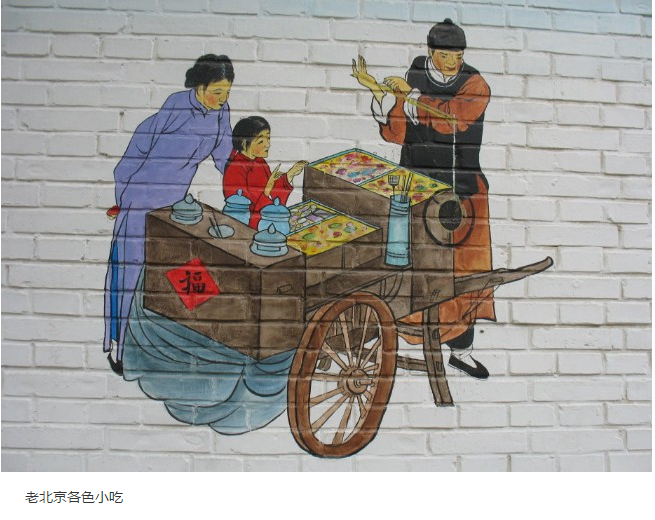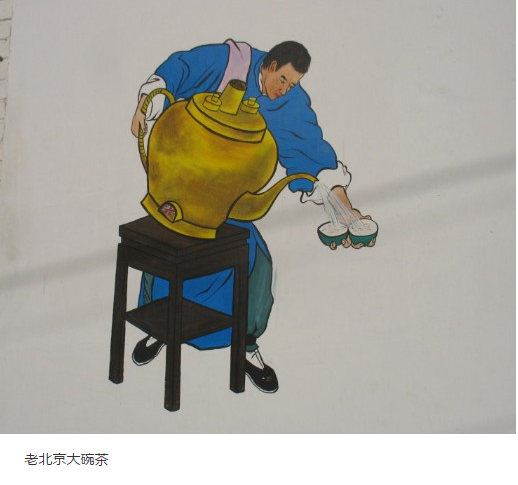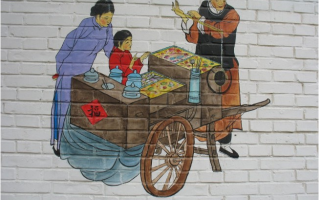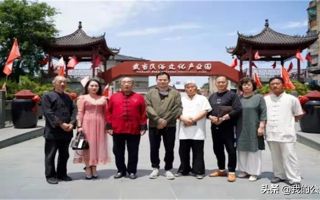《高碑店的民俗壁画》
- 2021-03-17 16:43:01
- 点赞量:6447
- 点击量:93134
- 作者:郝连成 Hao Liancheng

以天安门为起点,沿长安街往东走8公里就是以紫檀博物馆和古典家具闻名的高碑店。
Starting from Tian'anmen, 8 kilometers east along Chang'an Street is Gaobeidian, which is famous for its red sandalwood Museum and classical furniture.
高碑店北依京通快速路,南傍广渠路,西临四环路、东靠五环路。古老的通惠河临村而行,通惠灌渠穿村而过。京城水系旅游的终点站--通惠中心码头就在村边,在高碑店坐船可北达颐和园、东到通州城。优越的地理环境,便利的交通、深厚的历史文化底蕴,为高碑店村的文化产业发展奠定了极为坚实的基础。高碑店是个千年古村,辽金时已成村当时是漕运河码头、皇粮商品的集散地,曾盛极一时。
Gaobeidian is adjacent to Jingtong Expressway in the north, Guangqu road in the south, the Fourth Ring Road in the West and the Fifth Ring Road in the East. The ancient Tonghui river runs near the village, and the Tonghui irrigation canal passes through the village. Tonghui central wharf, the terminal of water system tourism in Beijing, is just beside the village. You can get to the summer palace in the north and Tongzhou City in the east by boat in Gaobeidian. Superior geographical environment, convenient transportation and profound historical and cultural heritage have laid a very solid foundation for the development of cultural industry in Gaobeidian village. Gaobeidian is an ancient village with a history of thousands of years. It became a village in the Liao and Jin Dynasties. At that time, it was the distribution center of canal wharf and imperial grain commodities.
借着地缘优势,高碑店村按着建设富民、人文、平安、环保、诚信、文明高碑店”的发展目标,坚持化挑战为机遇,变难点为亮点。在没有土地的情况下,村党总支一班人在夹缝中寻找出-条出路,拓宽村民就业渠道,从2003年召开了 古典家具展示会后,使这里的古典家具产业不断发展壮大,现在全村的古典家具商户大大小v小500多家,大型的商户不断入涌入,一条街带活了全村。借助古典家具的发展前景,又建成了华夏民俗文化园,民俗文化园的落成带动了周边产业的发展。随着高碑店民俗文化及民俗节日不断增多,民俗文化已成了高碑店展示北京民俗的一个窗口,不断吸引国内外游客。
Taking advantage of geographical advantages, Gaobeidian Village adheres to the development goal of "enriching people, humanities, safety, environmental protection, integrity and civilization", turning challenges into opportunities and difficulties into highlights. In the absence of land, a group of people from the general Party branch of the village found a way out in the cracks and broadened the employment channels of villagers. Since the classical furniture exhibition was held in 2003, the classical furniture industry here has been developing and growing. Now there are more than 500 classical furniture merchants in the village, and large-scale merchants are constantly pouring in. One street enlivens the whole village. With the help of the development prospect of classical furniture, the Huaxia folk culture park has been built. The completion of the folk culture park has driven the development of surrounding industries. With the increasing number of folk culture and festivals in Gaobeidian, folk culture has become a window to show Beijing folk customs in Gaobeidian, attracting tourists at home and abroad.
党的十八大后,为落实把生态文明建设放在重要位置”这一战略决策,高碑店又利用开发区墙体搞起了宣传老北京民俗的墙体壁画。
After the 18th National Congress of the Communist Party of China, in order to implement the strategic decision of "putting the construction of ecological civilization in an important position", Gaobeidian used the walls of the development zone to set up wall murals to publicize the folk customs of old Beijing.
2013年入冬第一场小雪欲来的时候,中国生态房网记者来到了高碑店文化街,看到了正在创作中的老北京民俗壁画,但见在几公里长的古瓦掩遮的路边砖墙上,已画出了很多反映老北京市民生活的人物和场景:练硬功的胸前顶着扎枪尖两人正较劲地把扎枪杆儿都挤成了弓型。看着就让人胆战心惊。打着哈力巴在说唱的小丑已是老人们口中的传说。顶缸卖艺的,方砖拍顶骗钱的,挎着粪笈子等着检小孩子拉屎的,拎着鸟笼子溜弯的,五行八作三教九流尽在那一片墙上展现出来,把人们一下子带回了民国时期的老北京人的生活。
When the first light snow was about to come in the winter of 2013, the reporter of China ecological housing network came to Gaobeidian cultural street and saw the old Beijing folk murals in the process of creation. However, on the roadside brick wall covered by several kilometers of ancient tiles, many characters and scenes reflecting the life of the old Beijing citizens were drawn: the two men were fighting to squeeze the sticks of the spears together It's a bow. It's frightening to watch. The clown who is talking and singing with haliba is the legend of the old people. Those who sell art on the top of a jar, those who cheat money on the top of a square brick, those who wait to check children's excrement with their feces, those who slide around with their bird cages, and those who do all kinds of things are displayed on that wall, bringing people back to the life of old Beijingers in the period of the Republic of China.
(民俗画师余小敏正在寒风中作画)
(folk painter Yu Xiaomin is painting in the cold wind)
正顶着寒风作画的民俗画家余小敏告诉中国生态房网记者,他是承德隆化人,就是当年董存瑞舍身炸碉堡的那个地方。他是在当地的陶瓷厂做画师的,后来厂子不景气,他就出来卖艺了。
Yu Xiaomin, a folk painter who is painting against the cold wind, told China ecohouse. Com that he is from Longhua, Chengde, where Dong Cunrui killed himself to blow up the blockhouse. He worked as a painter in a local ceramic factory. Later, when the factory was in recession, he came out to sell art.
这些年在他京津地区画过很多壁画,大多以庙上的观音菩萨和关公老爷,象画这样的能让人们想起中国早年生活的作品很少,他说,从这里他感觉到了国家的宣传导向正在发生转变。
In recent years, he has painted many murals in Beijing and Tianjin, most of which are the Guanyin Bodhisattva and Lord Guan in the temple. There are few paintings that remind people of the early life in China, he said. From here, he felt that the propaganda orientation of the country was changing.
谈到一年能接多少这样活时,他说象这样大量画壁画的活很少遇到,没有这类活时,他就做雕刻和做塑象,他也知道给庙里塑的泥像都是假的骗人的,但人家给钱了,就得做。要是凭良心说,同样的价钱,他还是愿意画这样的民俗画,这可比塑那些鬼神泥像有意义多了。
When he talked about how many such jobs he could take in a year, he said that such a large number of mural painting jobs were rarely encountered. Without such jobs, he would make sculptures and statues. He also knew that the clay statues in the temple were all fake and deceptive, but when they gave money, they had to do it. If he had a conscience, he would still like to draw such folk paintings at the same price, which would be more meaningful than those clay statues of ghosts and gods.

(2014-01-0709:53:54
(2014-01-0709:53:54





0 条 评 论 Write a Response